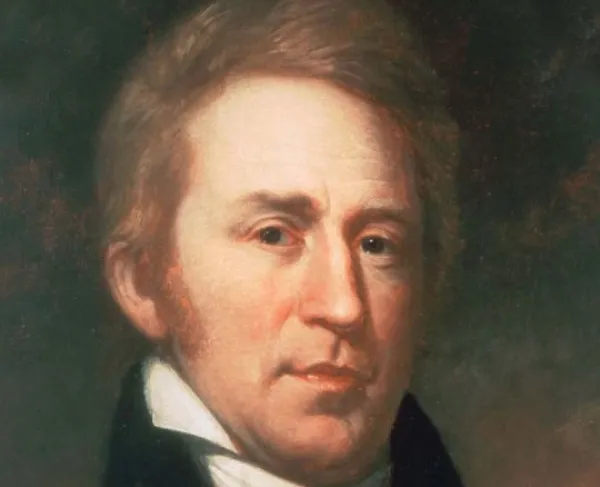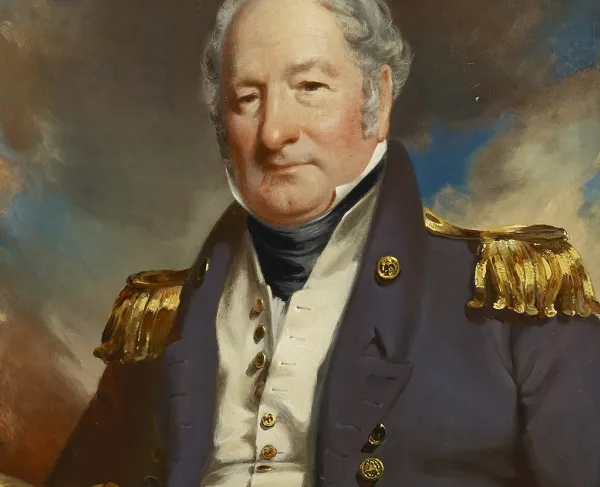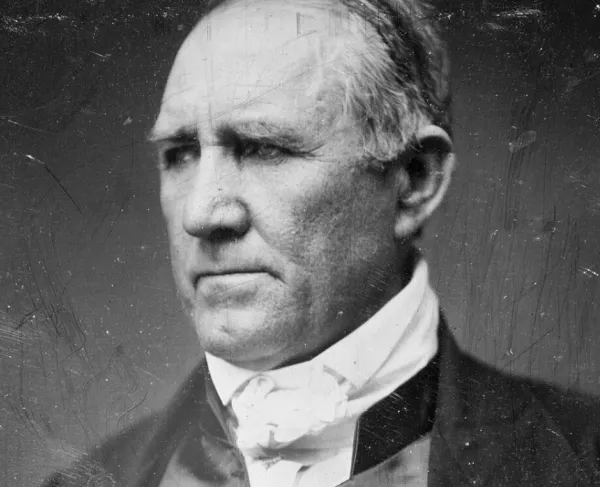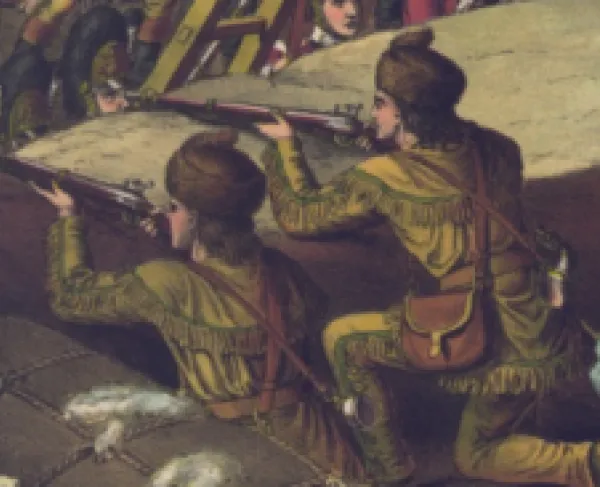William Clark

Captain William Clark’s name is almost inextricably tied with that of his partner, Meriwether Lewis, and the three-year scientific expedition they led that bears their names. What individual reputation he does possess is often that of a rough, backwoods military man. But more recent scholarship shows that this basis rests on only a small glimpse into the life of one of the leading pioneers of America’s westward expansion. Furthermore, while Lewis’ career was tragically cut short by his suspected suicide (or murder), Clark still went on to play a significant role in American history well after he returned from the Pacific Coast.
William Clark was born in in Caroline County, Virginia in 1770 to a moderately wealthy slaveholding family. As a teenager, his family also moved to Kentucky to begin a life on the frontier, where he learned many of his useful later outdoor skills. Most of Clark’s older brothers fought in the Continental Army during the Revolutionary War, and so with no formal education, he decided to follow that path and volunteer for a Kentuckian militia in time for the Northwest Indian War in 1789. Despite an unfortunate incident in which his unit attacked a peaceful Shawnee camp, Clark managed to rise through the ranks of the Army, leading a rifleman company at the Battle of Fallen Timbers in 1794.
Two years later he retired to his family’s plantation for personal health reasons and remained there until 1803, when Meriwether Lewis, a soldier once under Clark’s command, offered him a position on an expedition of discovery. The more politically-connected Lewis had fallen in favor with President Thomas Jefferson, who tasked his aide with creating a Corps of Discovery to explore the newly-acquired Louisiana Territory, with an emphasis on documenting both the natural history of the area as well as locating a possible water route to the Pacific Ocean. During the expedition, both commanders kept up journals to make note of what they observed. Many historians have noted the poor spelling and rougher handwriting in Clark’s entries, and this is where we often get the modern impression of Clark as a bumpkin, but modern scholarship has begun to push back against the image. Behind the grammatical inconsistencies, Clark drew up a detailed picture of the geography west of the Mississippi River and the various indigenous people who lived there. Furthermore, as his journal indicates, Clark often took a leading role in negotiating passage with the various Native American tribes, all of whom held different customs and spoke vastly different languages from each other, and with the aid of partners like Sacagawea, successfully prevented any major incidents of violence during the entire journey. His other main contribution for expedition was a slave he brought along as his personal valet, a man named York. Clark inherited possession of York from his father as a servant, but Clark’s own journal indicates that York contributed heavily to the success of the expedition, often serving in hunting and scouting parties and found success in negotiating trade agreements with Native Americans. As one of the few black men to ever reach those parts of the country at the time, he was said to have been a person of great interest to the various tribes the Corps came across. York naturally performed his duties without pay, but the expedition was likely his first taste of freedom, and by all accounts chafed at the thought of returning to bondage upon his and Clark’s return to Kentucky. Clark later wrote that he freed York, but since little evidence exists to support his claim, it is just as possible that he escaped instead.
Upon his return from the West, President Jefferson commissioned Clark as a Brigadier-General. He also tasked him with negotiating with Native American tribes within the territory as an agent of the United States, and this career took up the majority of his duties for the rest of his life. He also became the guardian of Sacagawea’s children, the Shoshone woman who aided the Corps of Discovery from the Rocky Mountains to the Pacific. During the War of 1812, Clark led a group of militia in the Louisiana territory, constructing Fort Shelby in what is now Wisconsin. For his services, President James Monroe appointed Clark Governor of the Missouri Territory, which he remained until 1820 when Missouri achieved its statehood. He attempted to run as governor of the new state instead but was handily defeated by Alexander McNair.
In 1822 President James Monroe appointed Clark Superintendent of Indian Affairs, which allowed him to create the Office of Indian Affairs in 1824, renamed Bureau of Indian Affairs in 1829, in coordination with the War Department. As an Indian agent, he put his experiences dealing with the myriad tribes on the trail west to great use and carried out his responsibilities often with great compassion towards his clients. This is supported by many of the tribal leaders who dealt with Clark, praising his forthright and honest character. Clark was an enthusiastic promoter of inoculation efforts to halt the spread of disease as well as research missions to preserve various aspects of Native American culture and society. He also at times discouraged many of his fellow Americans from settling in the territory too quickly, so as not to drive out the tribes from unfair competition. And yet, his sympathies could never completely override his duties to the United States government. His sympathies towards Native Americans never went away, but he also supported drives to “civilize” them and bring them more in line with mainstream American society or remove them from their ancestral lands entirely. Even many of his altruistic policies to promote inoculation or limit settlement were undermined by disobedient colonists and undisciplined militiamen who often went unpunished. Many scholars argued that these contradictory stances were a result of increased pressure from the federal government to support further settlement, but the result was the same. Historian Jay H. Buckley argues that despite clearly good intentions, Clark was “responsible for divesting Indians of more land than any other American.” He stayed in his post as Superintendent until his death in 1838. He currently lies buried in Bellefontaine Cemetery in St. Louis.





